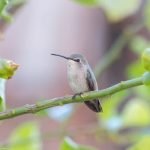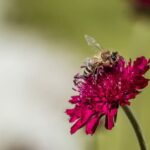Introducing young children to gardening can be a rewarding and educational experience. Gardening not only allows preschoolers to explore and connect with nature but also provides a hands-on learning opportunity.
In this article, we will explore the benefits of gardening for preschoolers, as well as fun and creative craft ideas to engage them in the gardening process. Whether you’re a parent or an educator, these gardening craft ideas for preschoolers are sure to bring joy and knowledge to the little ones.
Gardening offers numerous benefits for preschoolers, including teaching them about responsibility, patience, and the natural world. It can also help improve their fine motor skills and encourage healthy eating habits. Additionally, it provides an opportunity for sensory exploration and discovery, making it a fun and enriching activity for young children. With the right approach, gardening can be an excellent way to foster creativity and curiosity in preschoolers.
In the following sections, we will delve into various aspects of gardening specifically tailored for preschoolers. From choosing the right plants to creating DIY planting pots and labels, as well as engaging in garden-themed arts and crafts activities, there are plenty of ways to make gardening a fun and educational experience for young children. So let’s get started on our journey to introduce the little ones to the wonders of gardening.
Choosing the Right Plants for Preschoolers
When introducing preschoolers to gardening, it is important to choose plants that are safe, easy to care for, and engaging for young children. Selecting the right plants can help foster a love for nature and gardening craft ideas for preschoolers. Some great options include sunflowers, cherry tomatoes, strawberries, and herbs like mint or basil. These plants are not only relatively easy to grow but also offer sensory exploration opportunities for preschoolers.
Sunflowers are a popular choice as they grow quickly and produce large, vibrant flowers that capture a child’s attention. Cherry tomatoes and strawberries are fun to pick and eat, providing a hands-on experience with gardening produce. Herbs like mint or basil offer fragrant smells and unique textures that engage a child’s senses. Choosing plants that encourage sensory exploration and discovery can make the gardening experience more enjoyable and educational for young children.
In addition to choosing engaging plants, it is essential to consider safety. Some common garden plants may be toxic if ingested, so it is crucial to choose non-toxic varieties when gardening with preschoolers. For example, marigolds and zinnias are colorful flowers that are safe for children to handle.
When selecting vegetables or fruits to grow, opt for child-friendly options such as cherry tomatoes or snap peas. By choosing safe and engaging plants, parents and educators can create a positive gardening experience for preschoolers while teaching them about plant care and nature’s wonders.
| Plants | Benefits |
|---|---|
| Sunflowers | Grow quickly and produce vibrant flowers |
| Cherry Tomatoes | Fun to pick and eat; provides hands-on experience with produce |
| Strawberries | Engaging fruit-picking activity; offers sensory exploration opportunities |
| Mint/Basil | Fragrant smells & textures engage child’s senses; simple to care for |
DIY Planting Pots and Labels
When it comes to introducing preschoolers to the world of gardening, DIY planting pots and labels can add an extra element of fun and creativity to the experience. Not only do these activities provide an opportunity for hands-on learning, but they also allow children to take pride in creating something with their own hands. Here are some creative and simple ideas for making planting pots with preschoolers:
Recycled Containers
One eco-friendly and budget-friendly option is to use recycled containers as planting pots. Encourage children to decorate old yogurt cups, milk cartons, or tin cans with paint, stickers, or even decoupage with pictures from seed catalogs. Not only does this teach kids about sustainability and upcycling, but it also gives them a sense of ownership over their plants.
Newspaper Pots
Another easy and biodegradable option is to make planting pots out of newspaper. This activity not only allows preschoolers to practice their fine motor skills as they fold and tuck the paper, but it also provides a valuable lesson in sustainability by showing how everyday items can be repurposed.
In addition to creating unique planting pots, making plant labels can further engage preschoolers in the gardening process. Plant labels help children learn about the names of different plants and understand the importance of proper care for each one. There are many fun ideas for creating plant labels that appeal to young children:
Nature-Inspired Labels
Gather small rocks, sticks, or wooden craft sticks from the garden and have preschoolers decorate them with waterproof markers or paint to create natural looking plant labels. This activity not only reinforces connections between nature and growing plants but also helps develop fine motor skills through painting and drawing.
Seed Packet Labels
Another educational idea is to use empty seed packets as plant labels. Preschoolers can cut out pictures from old seed packets and glue them onto small pieces of cardboard or popsicle sticks before sticking them into the soil next to their planted seeds. This exercise is a great way for kids to learn about different types of plants while practicing cutting and pasting skills.
Overall, engaging in these DIY planting pot and label activities fosters creativity, teaches children about sustainability, encourages responsibility towards caring for living things, and facilitates early learning about plants – making them excellent gardening craft ideas for preschoolers.
Garden-Themed Arts and Crafts
Crafting ideas inspired by nature and gardening are a fantastic way to spark creativity and imagination in preschoolers. From making flower crowns to creating leaf rubbings, there are countless opportunities to incorporate the beauty of the garden into arts and crafts projects for young children. By engaging in these gardening craft ideas for preschoolers, kids can develop their fine motor skills, learn about different plant varieties, and gain an appreciation for nature.
Nature-Inspired Collage
One fun and easy gardening craft project for preschoolers is creating a nature-inspired collage. Take the little ones on a nature walk around the garden to collect items such as leaves, flowers, and twigs. Use these natural materials to make a beautiful collage on paper or cardboard that showcases the beauty of the garden. This activity not only encourages creativity but also provides an opportunity for children to learn about different plant species in their surroundings.
Pinecone Bird Feeders
Another enjoyable gardening craft idea for preschoolers is making pinecone bird feeders. Collect pinecones from the garden and let the kids spread peanut butter on them using plastic knives. Then, roll the pinecones in birdseed until they are fully coated. Attach a piece of string to each pinecone and hang them from tree branches in the garden. This activity not only serves as a fun arts and crafts project but also teaches children about caring for wildlife in their environment.
Pressed Flower Bookmarks
Preschoolers can also create pressed flower bookmarks using flowers from the garden. After collecting some colorful blooms, place them between two pieces of paper and press them inside heavy books for a few days until they are dried flat.
Then, help the kids laminate the pressed flowers onto cardstock and attach a ribbon at the top as a decorative tassel. Not only will this project allow children to explore their artistic side, but it will also teach them about preserving natural objects from the garden through drying techniques.
By incorporating these diverse activities into gardening with preschoolers, parents and educators can nurture children’s love for nature while providing valuable learning experiences through arts and crafts projects inspired by the garden.
Garden Scavenger Hunt
Gardening is not only a great way to teach preschoolers about nature and responsibility, but it can also be a lot of fun. One activity that can be both educational and enjoyable for young children is a garden scavenger hunt. This activity allows preschoolers to explore their surroundings while also learning about the different plants and creatures in the garden.
To organize a garden scavenger hunt for preschoolers, you can create a simple list of items for them to find. Here are some ideas for items to include in the scavenger hunt:
- A smooth rock
- A leaf with jagged edges
- Something red
- Something alive (a bug, butterfly, or worm)
- Something soft (a flower petal or fuzzy leaf)
Encourage the children to search for these items in the garden and check them off their list once they’ve found them. This will not only help develop their observation skills, but it will also foster a sense of curiosity and wonder about the natural world around them.
Additionally, you can incorporate the concept of counting into the scavenger hunt by asking them to find a certain number of specific items, such as five yellow flowers or three different types of leaves. Not only will this help reinforce their counting skills, but it will also introduce them to the idea of classification and categorization.
Overall, organizing a garden scavenger hunt is a wonderful way to engage preschoolers in nature exploration while introducing them to the concept of biodiversity and plant identification. It’s an interactive activity that encourages observation, curiosity, and discovery-all essential qualities for budding young scientists and nature lovers.
Garden Story Time
Incorporating storytelling into the gardening experience for preschoolers can be a wonderful way to foster a love of nature and plants. There are countless books and stories that revolve around gardens and the natural world, making it easy to find material that will captivate young children.
Whether it’s classic tales like “The Tiny Seed” by Eric Carle or “Planting a Rainbow” by Lois Ehlert, these stories can not only entertain but also educate preschoolers about the lifecycle of plants and the beauty of gardens.
Storytelling can also be combined with hands-on activities such as seed planting or flower pressing to bring the stories to life in a more tangible way. By engaging both their imaginations and their senses, children can develop a deeper appreciation for nature and gardening. This combination of storytelling and interactive experiences creates an immersive learning environment that is both enjoyable and educational for preschoolers.
Between reading garden-themed books, acting out stories with puppets, or creating their own garden-inspired tales, there are endless opportunities to incorporate storytelling into the gardening experience for young children. Not only does this help cultivate a love for literature and nature, but it also enhances the overall gardening experience for preschoolers.
As educators and parents seek to introduce young children to the joys of gardening, incorporating garden story time into their activities is a meaningful way to enrich their understanding of plants, nature, and the world around them. By intertwining literature with hands-on experiences in the garden, preschoolers can develop a deeper connection with nature while also building essential language and cognitive skills through storytelling.
Gardening Games and Activities
Gardening with preschoolers can be a fun and educational experience, and incorporating games and activities can make it even more exciting for young children. Here are some engaging ideas to make gardening more interactive for preschoolers:
1. Planting Races: Turn planting seeds or seedlings into a race. Set up different planting stations and have the kids compete to see who can plant their seeds or seedlings the fastest. This not only makes gardening fun but also helps develop fine motor skills in young children.
2. Bug Hunt: Encourage preschoolers to explore the garden and look for different bugs and insects. Provide them with small magnifying glasses so they can observe these creatures up close. This activity not only promotes curiosity and observation skills but also teaches children about the important role of bugs in the garden ecosystem.
3. Garden Bingo: Create a bingo game using images of various plants, flowers, and garden tools. Give each child a bingo card and have them mark off items as they spot them in the garden. This game helps preschoolers learn about different plants and tools while having fun in the garden.
Incorporating these games and activities into the gardening experience for preschoolers not only makes it enjoyable but also helps them develop important skills and knowledge about nature. Gardening craft ideas for preschoolers can extend beyond just planting and caring for plants, creating an all-encompassing learning experience in nature.
Garden Harvest and Snack Time
Gardening is a great way to teach preschoolers about nature, responsibility, and patience while also developing their fine motor skills. However, one of the most rewarding parts of gardening for preschoolers is the harvest and snack time. It’s an opportunity for children to see the fruits of their labor and enjoy the delicious produce that they have grown themselves. There are many fun and simple ideas for harvesting and enjoying the fruits and vegetables from the garden.
One engaging activity for preschoolers during harvest time is to create a “harvest basket” or “treasure box” where they can collect the produce they have grown. This not only gives them a sense of accomplishment but also encourages them to take care of what they have cultivated. Parents and educators can also organize a mini “harvest festival” where children can showcase their produce to friends and family.
After harvesting, preschoolers can be involved in preparing simple and healthy snacks using the fresh produce from the garden. Whether it’s picking cherry tomatoes for a salad, making fruit kebabs with strawberries and grapes, or cutting up crunchy carrots for dipping into hummus, there are plenty of tasty and nutritious options to choose from.
Involving children in preparing their own snacks not only teaches them about healthy eating habits but also allows them to appreciate the food they’ve grown.
Another fun idea is to host a “garden tea party” where preschoolers can enjoy herbal teas made from plants in the garden along with some homemade healthy treats. This creates a special moment for children to take pride in what they have achieved through gardening craft ideas for preschoolers.
| Gardening Activity | Description |
|---|---|
| Create a Harvest Basket | Encourages kids to collect their own produce |
| Mini Harvest Festival | Showcasing produce to friends and family |
| Healthy Snacks Preparation | Teaching kids about healthy eating habits through garden produce |
| Garden Tea Party | An enjoyable event involving herbal teas made from garden plants |
Conclusion
In conclusion, gardening offers numerous benefits for preschoolers, providing them with valuable opportunities for hands-on learning and sensory exploration. Engaging in gardening activities can help children develop a sense of responsibility and patience as they care for their plants. Additionally, it promotes a connection to nature and an understanding of where food comes from. By introducing gardening craft ideas for preschoolers, parents and educators can foster creativity and an appreciation for the natural world.
Furthermore, gardening can be a fun way to teach young children about science, biology, and the environment. Through the process of planting and observing their plants grow, preschoolers can gain a better understanding of the life cycle and the importance of taking care of living things. Moreover, involving children in garden-themed arts and crafts allows them to express their creativity while incorporating natural materials from the garden into their projects.
It is essential that parents and educators consider introducing gardening to preschoolers as an enriching activity that can promote physical activity, healthy eating habits through garden harvests, environmental awareness, and overall well-being. As such, we encourage adults to take advantage of these benefits by starting a garden with young children today. By doing so, they will provide them with valuable experiences that can make a positive impact on their development.
Frequently Asked Questions
How Do You Make a Garden Craft?
Making garden crafts can be a fun and creative activity. You can start by gathering natural materials like leaves, flowers, and sticks from your garden.
Then, use these materials to create things like leaf prints, flower pots, or nature-themed collages. You can also incorporate other craft supplies like paint, glue, and paper to add different elements to your garden crafts.
How Do You Make a Garden for Toddlers?
Creating a garden for toddlers involves considering their safety and age-appropriate activities. You can start by designating a specific area of the garden for them to play in, ensuring that it is fenced off and free from potential hazards.
Planting colorful and scented flowers can engage their senses, while adding child-friendly garden ornaments or a small sandbox can provide additional entertainment.
How Do You Make a Children’s Garden?
Designing a children’s garden requires incorporating elements that are both educational and entertaining. Consider planting vegetables or fruits that children can help care for and harvest.
Adding interactive features like a sensory garden with different textures and smells, or a butterfly garden with plants that attract butterflies, can make the space both fun and educational for children. Additionally, including child-sized tools and seating areas allows them to actively participate in gardening activities.

Welcome to my gardening blog! I am passionate about plants and enjoy sharing my knowledge and experiences with others. In this blog, I will write about everything related to gardening, from tips on how to get started to updates on my own garden projects.





